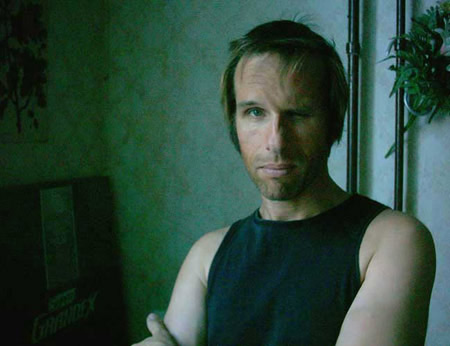
Sedimentation Process: City Not quite photo-realism but the illusion thereof utilises the possibilities of composition in order to create a story with spatial layering aiming to be unlike anything which preceded it. The intensity of the urban landscape, the irregularities it harbours and the sheer power of the individual structures tell of a time of past glories. The society, whose best days have been left behind, forms the foundation and provides the benchmark of our actions today and thus expresses an analogy of the course of life. Using Mannerism in eclectic forms, a snapshot of the postmodern is extended beyond its natural boundaries in a series of style references. Keeping in mind the definition of dual coding as the crucial characteristic in postmodern constructions in which different groups are supposed to be addressed through a combination of historicised and modern forms, regional and international references, in this case theoretically more homogenous ideal images are used. This capriccio alludes to the simultaneousness of certain pseudo-historical events which raises questions as to their stylistic origins as the anachronisms become apparent. These contradictory elements in the works seem to imply the existence of a reality beyond the utopia yet they nevertheless take an apparently ideal city as their foundation. The unanswerability of the question as to the causality which has led a particular architectural legacy leads inexorably to Adorno’s demand in the “aesthetic theory” that a work of art always throws up puzzles which it then leaves open. “The indeterminacy between the unobtainable and the realised defines this puzzle.” The transposition of interiors and exteriors, the creation of a sense of temperature, the feeling of isolation in the images through the lack of any movable objects and the old antagonists homogenous and heterogeneous surfaces, the peacefulness of the architecture and the movement in the perspective, fear inducing dark corners and illuminated islands of calm create, on the one hand, a strong perspectivistic draw. On the other hand, the Grisaille uniformity provokes a reduction to the terms fiction and reality, past memories and present experiences as well as life and death. One further theme of the works originates in the aesthetic spatial theory, which no longer only concerns facades and interiors – the simple inside and outside of classic architecture theory – but increasingly finds application with the perception of atmosphere. The atmosphere also encapsulates the positioning within the urban landscape, the light effects, as well as the relationship with other nearby shapes, which are hinted at using shadows and reflections in window panes. |
|||
 |
|||
Artists have been considering art history since postmodernism began. Stefan Hoenerloh invents his own, imaginary art history, an autonomous art history which reflects the surrounding world as a notional idea with minimalistic fragments. His subjects are rooted in architecture as such elements represent the important time factor: if one observes an imaginary culture from a time exposure perspective, only the architecture (the immovable elements) which remains visible. Hoenerloh constructs his images with the rationality of a stage designer who remains true to the architectural system and keeps the perspective of the viewer in mind. A world unfolds in the sober and rationally composed works, full of anticipation and enigma with familiar and foreign elements. Hoenerloh is a master of anachronistic warping and subtle tension. The conception of his pictures has various influences from surrealism and postmodernism and includes stylistic elements of the Renaissance and the Wilhelminian Period. A visibly fragility is evident in Hoenerloh’s art through the apparent conflict between the abstract character of the wall surfaces and the ideal planning of an architect, partly only through titles and tiny letters. This fragility goes beyond the level of mere quotation which tries to transcend postmodernism. The “well-known postmodern topoi – the end of metanarratives, dispersion of the subject, decentration of the senses, simultaneousness of the non-synchronous…” (Wolfgang Welsch: unsere postmoderne Moderne) – are largely avoided or kept at an ironic distance. Art which is only understood intercontextually, remains hermetic and self-referentially removed itself from its original intention, making it an artistic ivory tower. Hoenerloh provides us with a key, a magnet which facilitates the amenability of the pictures on a primary level with the help of narrative elements. He deliberately refuses to perpetuate the incoherence inherent in postmodernism which has led to the problem of so-called postmodern arbitrariness by combining stylistically uniform rows of buildings with a retro-coherent painting technique. The theory of pluralism is taken up with manneristic collages; in spite of the high density of information, Stefan Hoenerloh's pictures are all stringently spartan. An autonomous, exemplary art history is created through variously appearing vanitas symbols such as the mise en abyme and references to own parts of pictures as well as notional pairs of antagonists with a transposition of the interior and exterior or parts of Jackson Pollock's works which are worked into the wall surfaces; in this way decomposition is equated with abstraction. |